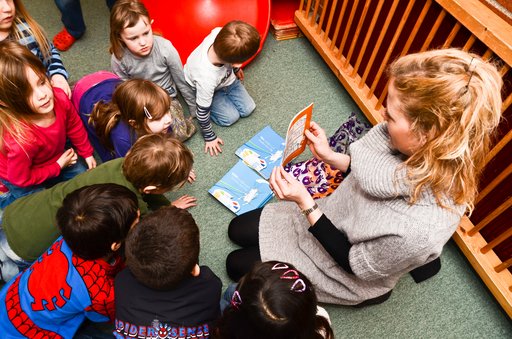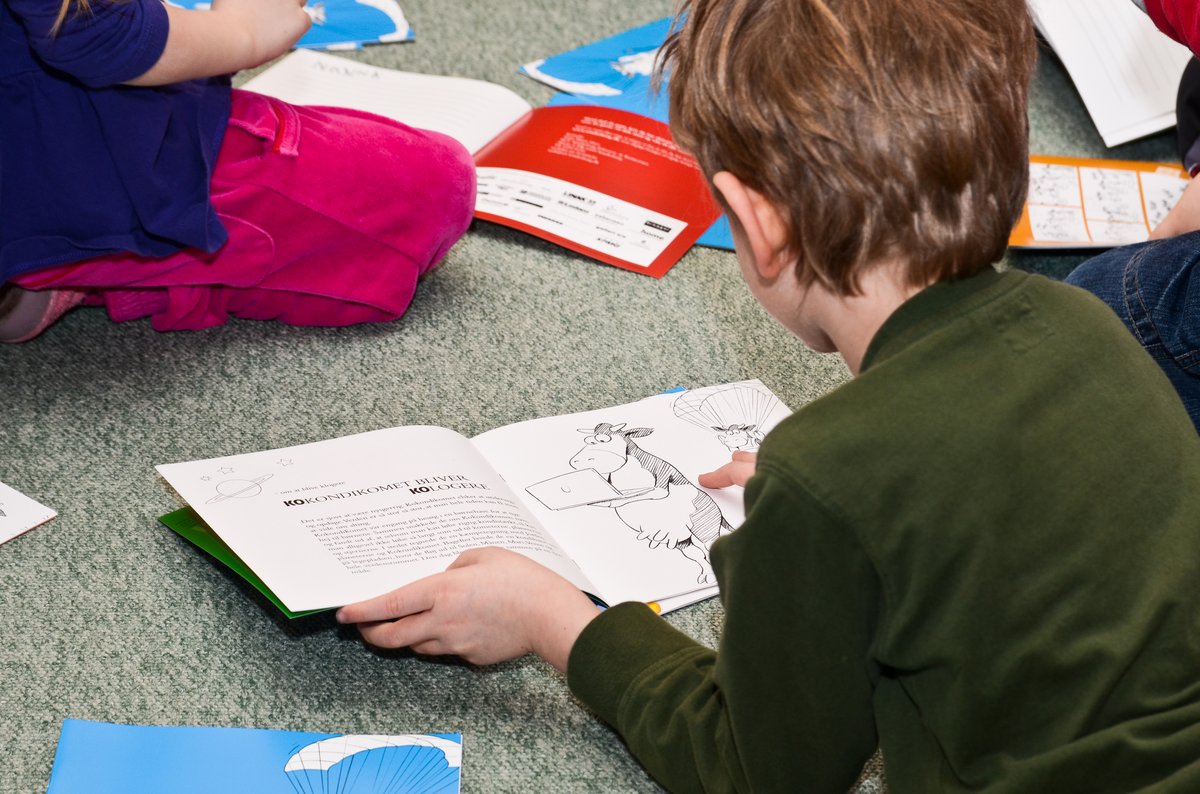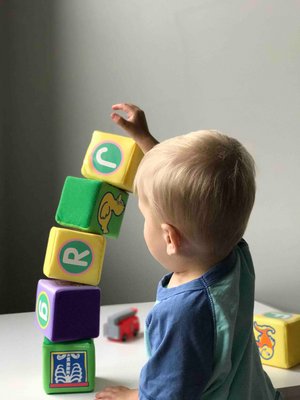The Influence of Nordic Childhood Institutions
Professional childcare influences upbringing at home, with a focus on Denmark.
Summary: A high proportion of families are deeply dependent on day-care centres and schools in the Nordic countries, but the impact of these institutions on upbringing and family life are rarely discussed. Research reveals that the everyday practices and norms which are carried out at these institutions pervade the private sphere and affect the behaviour of both parents and children alike. These norms can be so ingrained that people do not even notice them; they can have a standardising effect which can be helpful, but it can also reduce the different ways of doing and being a family.
State-run childcare institutions in Scandinavia

In the Scandinavian countries, the state is particularly involved in children’s lives and upbringing. Children and their welfare are now part of a range of political and economic priorities and labour market initiatives, and children’s institutions constitute a fundamental part of the fabric of society.
The Scandinavian countries are characterised by high levels of employment among both mothers and fathers, and correspondingly high rates of public childcare in the form of preschool and after-school facilities. This is despite the fact that attendance is neither mandatory nor fully subsidised (but with reduced tariffs for low-income families). For example, statistics for 2014 in Denmark indicated that 91.2% of all children aged one to two years attended out-of-family care, while 97.2% of children aged from three to five years old were enrolled in kindergartens. The attendance rate in after-school programmes for 2020 was approximately 92% for the youngest schoolchildren (ages five to seven).
According to the OECD, the four countries that spend the most on early childhood education and care compared to total GDP is Sweden, Norway, Iceland and Denmark.
Despite growing concerns over the quality of the day-care facilities in Denmark over the last decade, surveys continue to show a generally high level of satisfaction among parents. Thus, it seems that most parents send their children to kindergarten and school because they trust that it will benefit their child and they, in turn, tend to comply with the institutional requirements because they agree with their overall educational principles and objectives.
The impact on family life
Due to the high level of attendance, childhood institutions have a growing influence on life in general. This reflects the increased importance they have for society, but it is also the result of the institutional form itself, where the coordination of many individuals requires a standardisation of both children’s and parents' behaviour. To allow institutions to function smoothly, parental support is necessary, which means that parents and children must adapt to the institutional rhythm and organise their family life accordingly. This is described in an ethnographic study of Danish kindergartens by educational anthropologists Karen Ida Dannesboe, Dil Bach, Bjørg Kjær, and Charlotte Palludan:
“Parents are prompted to submit to institutional routines and take care of practicalities. Furthermore, they are expected to align family life and activities at home to institutional values and norms. This is considered crucial in enabling pedagogues to perform their job of cultivating children at the institution. […] As such, the cultivational work is also directed at parents; they are not only partners but also targets for pedagogical intervention” (p. 470).
Tatjana Thelen and Haldis Haukanes (2010) describe this development as a more general and cross national tendency, which involves a ‘deprivatization’ of childhood and parenthood, where children’s development and upbringing are seen as a public rather than a purely private concern. Today, schools, and increasingly also facilities for preschool children, are seen as an indispensable part of a child’s path into society. If children are to develop the necessary skills and insights, professional guidance and an organised environment are needed, as is systematic collaboration between parents and childhood professionals.
Standardising tendencies
My own ethnographic observations in kindergartens and interviews with parents and teachers confirm the impact institutional norms have on family rhythms and behavioural norms. Since children are grouped according to age, it is possible to compare their actions and skills – indeed, every aspect of their development from their first years of life. Whenever a specific child’s behaviour gives cause for concern, or parents’ lifestyle, values or upbringing practices conflict with institutional norms, professionals will emphasise what constitutes normal and desirable behaviour. This normative dimension has implications for parenting priorities as well as for everyday routines and practices at home. Thus, one can observe how parents seek to: be on time; pick up children as early as possible; get children to bed at a 'proper' time; incorporate healthy eating habits; and, ensure the child knows their numbers and letters, is read to daily, doesn't spend too much time on a screen – and so on. However, these endeavours are not just about supporting the child's optimal development, they are also about social standing; how both the child and the parents appear in the eyes of staff, as well as other parents.
Across specific field sites, it has been apparent in my research that it is not only staff who register if a child wears clothes that are not well-suited for the season, has poor dental hygiene, or behaves in a rough and disruptive manner, other parents also notice and distance themselves from such families, encouraging their child not to befriend the other child (see my article from 2014). Parents seem to be acutely aware that their social reputation is related to the way they interact with and raise their children, just as they are conscious that their child's behaviour in the institution will be interpreted as a reflection of their parenting practices and the general moral habitus of the home (see my articles from 2017 written with Laura Gilliam for more on this.).
All of this indicates how childhood institutions influence standards for upbringing and thereby subtly contribute to distinctions between those parents who comply with (and thus confirm the institutional standards) and those parents who do not. In this way, the influence of childhood institutions is much greater than just the provision of education to children; these institutions have institutionalised complex sets of norms that have implications for the social interactions between children, children and teachers, parents and professionals, as well as in and between families. They have an impact on the subtle dynamics of social status within society more generally, which, in turn, have an impact on the priorities and practices of individual families.

This article is based on a longer version of a chapter by the same author in The Doing and Making of Family edited by Sabine Bollig, and published by Bielefeld University Press.
Anthropology can shed light on our assumptions about children’s daycare.
This article is published in response to readers’ interest in childhood and education.
Further reading:
- Anne Lise Ellingsæter & Arnlaug Leira (eds.), Politicising parenthood in Scandinavia: Gender relations in welfare states (Bristol: The Policy Press, 2006).
- Anne Lise Ellingsæter, “The Norwegian childcare regime and its paradoxes” in Anne Lise Ellingsæter & Arnlaug Leira (eds.), Politicising parenthood in Scandinavia: Gender relations in welfare states (Bristol: The Policy Press, 2006), pp. 121-144.
- Karen Ida Dannesboe, Dil Bach, Bjørg Kjær, Charlotte Palludan, 'Parents of the Welfare State: Pedagogues as Parenting Guides,' in: Social Policy and Society, 17, 3 (2018) pp. 467-480.
- Laura Gilliam & Eva Gulløv, Children of the welfare state: civilising practices in schools, childcare and families (London: Pluto Press, 2017).
- Norbert Elias, “The Civilizing of Parents” in Johan Goudsblom & Stephen Mennell (eds.), The Norbert Elias Reader (Oxford: Blackwell, 1998), pp. 189-211.
- Viviana A. Zelizer, Pricing the Priceless Child: The Changing Social Value of Children (Princeton: Princeton University Press, 1985).

